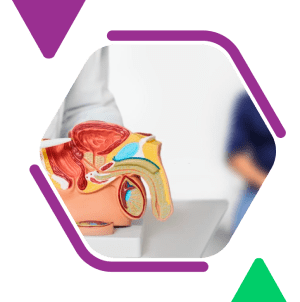- Home
- About Us
- Hair Treatment
- Hair Transplant
- Hair Loss
- Causes of Hair Loss
- Clinical Features
- Laboratory Test
- Medical Treatment
- Cyclic Treatment
- PRP
- Laser Treatment
- Surgical Treatment
- FUE
- Robotic
- FUT
- Beard Reconstruction
- Moustache Reconstruction
- Eyebrow Reconstruction
- Side Burn Reconstruction
- Complications Of Hair Transplant
- Alopecia Areata
- Telogen Effluvium
- Cosmetic Surgery
- Plastic Surgery
- Gallery
- Blogs
- Contact Us
Reconstruction of Upper and Lower Limb

Reconstruction of Upper and Lower Limb
The Human Hand is one of the marvels of evolution, unsurpassed in its dexterity and sophistication. Naturally, special skills and knowledge are needed to put it back to work when a problem occurs, be it an injury in the workplace or an infection. When children are born with hand deformities, it calls for ingenuity to make it functional.
With the advent of microsurgery and enhanced knowledge of the mechanics of hand function, Hand Surgery as a specialty began to evolve. Better results are now obtained when surgeons who are trained in Hand surgery deal with the problems of the hand by:
- Reimplantations and revascularization
- Flap surgery.
- Tendon repairs.
- Tendon transfer for nerve injury.
- Treatment of bone fractures
Since the conquest of the upright position, the lower limb has gained more importance as an organ that supports the whole body weight and that allows humans to stand up, walk, run, jump and climb.
Despire these specific and unique features, lower limb reconstruction has been underestimated for many years, and amputation was considered the treatment of choice for large lower limb damage.
But timely plastic surgery intervention can save many limbs by:
- Revascularization
- Microvascular surgery.
- Flap surgery.
Advancements in Upper and Lower Limb Reconstruction Surgery: Saving Function and Mobility
The intricate anatomy and vital functions of the upper and lower limbs make their reconstruction a complex yet essential aspect of modern surgical practice. Whether addressing traumatic injuries, congenital deformities, or functional impairments, surgeons specializing in upper and lower limb reconstruction employ a diverse array of techniques to restore form, function, and mobility to these critical appendages. This comprehensive guide explores the evolution of upper and lower limb reconstruction surgery, highlighting key advancements, innovative approaches, and transformative outcomes for patients.
Unraveling the Complexity of Upper Limb Reconstruction
The human hand stands as a testament to evolutionary marvel, boasting unparalleled dexterity and sophistication. When injuries, infections, or congenital deformities compromise hand function, specialized skills and knowledge are required to restore its intricate mechanics. The emergence of hand surgery as a distinct specialty has revolutionized the treatment of hand-related conditions, offering improved outcomes through advanced techniques such as:
- Reimplantations and Revascularization: Severed digits or limbs can be reattached and restored to function through meticulous reimplantation surgery, reconnecting blood vessels, nerves, tendons, and bones to promote healing and functional recovery.
- Flap Surgery: Flap surgery involves the transfer of healthy tissue from adjacent or distant donor sites to reconstruct complex defects, restore soft tissue coverage, and enhance wound healing in the hand. Microsurgical techniques allow for precise tissue transfer and vascular anastomosis, minimizing donor site morbidity and optimizing aesthetic and functional outcomes.
- Tendon Repairs and Transfers: Tendon injuries in the hand can impair grip strength, finger mobility, and fine motor function. Surgeons perform tendon repairs to reestablish tendon continuity and function, while tendon transfers may be employed to restore muscle balance and improve function following nerve injury or paralysis.
- Bone Fracture Treatment: Fractures of the hand and wrist are common injuries that require timely and appropriate management to optimize healing and prevent long-term complications. Surgical techniques such as open reduction and internal fixation (ORIF) allow for anatomical alignment and stable fixation of fractured bones, promoting early mobilization and functional recovery.
Embracing Innovation in Lower Limb Reconstruction
The lower limb plays a crucial role in supporting body weight, facilitating mobility, and enabling essential activities such as standing, walking, and running. Despite its significance, lower limb reconstruction has historically been underestimated, with amputation often considered the default treatment for extensive limb damage. However, advancements in plastic surgery techniques have revolutionized the management of lower limb injuries and deformities, offering new hope for limb preservation through:
- Revascularization: Timely revascularization procedures aim to restore blood flow to ischemic lower limbs, salvaging viable tissue and preventing the need for amputation. Techniques such as arterial bypass grafting, endovascular interventions, and thrombectomy are employed to reestablish vascular perfusion and promote tissue viability.
- Microvascular Surgery: Microvascular reconstruction techniques allow for the transfer of vascularized tissue from distant donor sites to repair complex defects and restore function in the lower limb. Free tissue transfer procedures, such as the fibula free flap or anterolateral thigh flap, enable the transplantation of skin, muscle, and bone with preserved blood supply, facilitating wound healing and limb preservation.
- Flap Surgery: Flap surgery plays a pivotal role in lower limb reconstruction, providing soft tissue coverage, wound closure, and functional restoration in cases of traumatic injuries, chronic ulcers, or congenital anomalies. Local, regional, and free flaps are meticulously tailored to match defect size, location, and tissue requirements, optimizing aesthetic and functional outcomes.
Multidisciplinary Collaboration and Patient-Centered Care
Successful upper and lower limb reconstruction surgery relies on multidisciplinary collaboration and patient-centered care, with surgeons working closely with orthopedic specialists, physical therapists, rehabilitation specialists, and prosthetists to achieve comprehensive treatment goals. Patient counseling, shared decision-making, and personalized rehabilitation programs are integral components of the treatment process, empowering patients to actively participate in their recovery and optimize functional outcomes.



 Book an Appointment
Book an Appointment